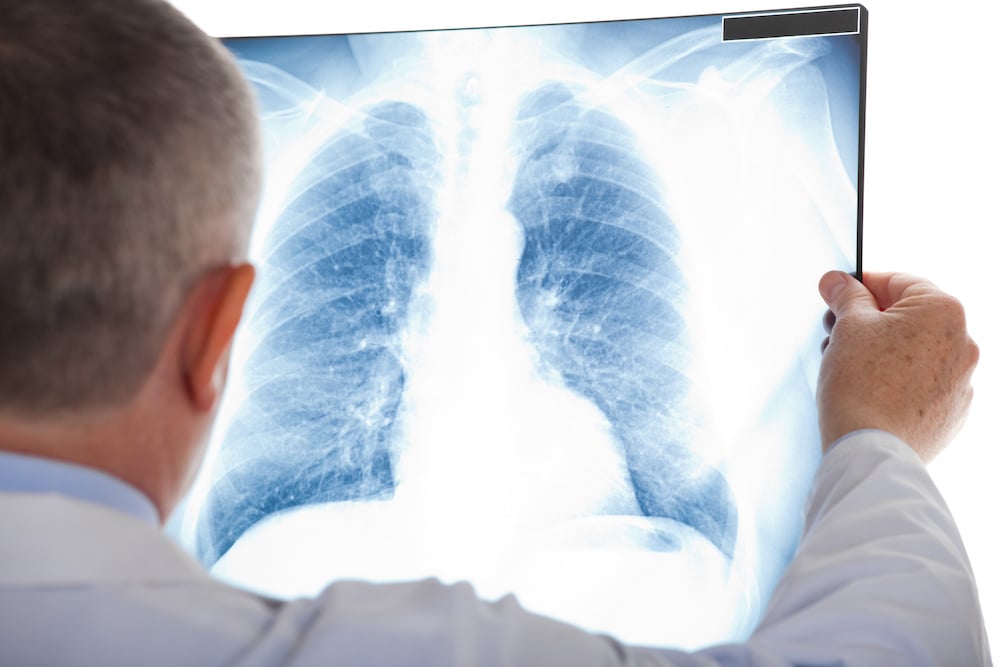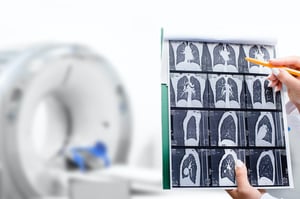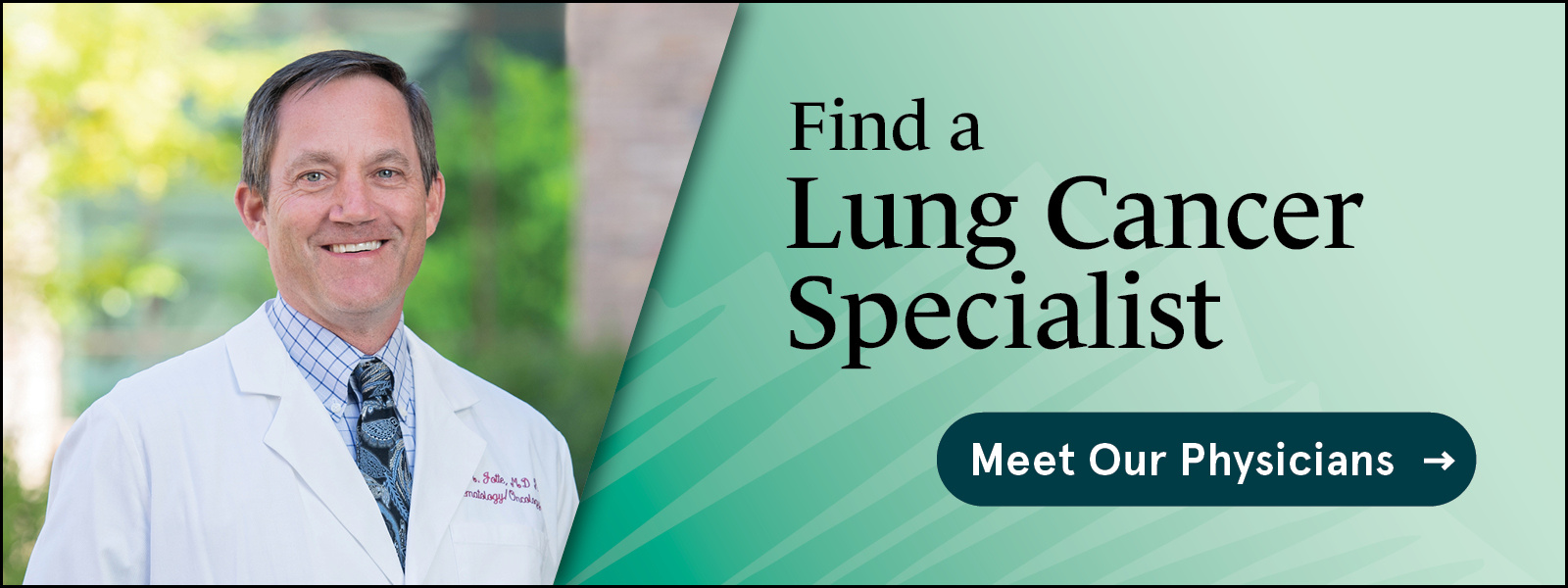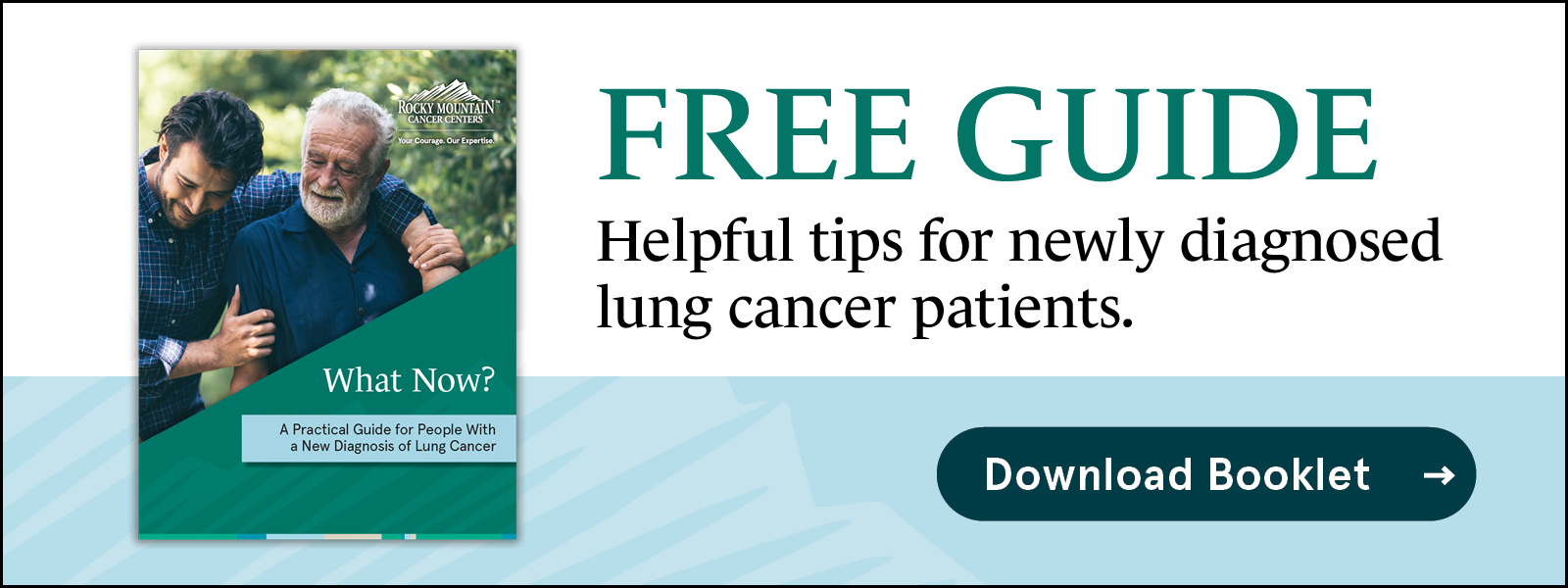What to Expect After a Lung Nodule Diagnosis
5 min read

It can be very concerning to hear that you have a nodule in your lung. You might even think the very worst: lung cancer. Although it’s normal to be worried and anxious when there is even a small chance you might have lung cancer, it’s important to understand that most lung nodules are benign (noncancerous) and caught early enough to where they are easy to treat effectively. Let’s take a look at what nodules are and what to expect if one has appeared on your chest X-ray or CT scan.
Lung Nodules: What Are They and What Causes Them?
A lung (pulmonary) nodule is an abnormal growth that forms in the lung. They’re rather common and found in up to half of adults who have a chest X-ray or CT scan – usually as part of testing for another health condition.
They often form after a lung infection as a small clump of cells. These cells can calcify over time which makes them hard and detectable on chest x-rays. Sometimes only one nodule is present, and in other cases, several nodules are found. The doctor may refer to the nodule as a “shadow” on an X-ray because it appears as a white spot. Nodules vary in size, ranging from 3mm to 25mm or more in diameter, with lung nodules less than 9 mm considered small.
While nearly all of these nodules are not cancerous, there are times they can be an early sign of lung cancer.
Other than a previous infection, other possible causes of lung nodules include air irritants in your lungs over time and autoimmune diseases such as rheumatoid arthritis and sarcoidosis.
Lung Cancer Screening is Used to Find Nodules in High-Risk Patients
Smoking increases the likelihood of nodules developing in the lungs. That’s because smoke is a lung irritant. Low-dose CT scans can be used to check your lungs and screen for lung cancer if you meet the following criteria:
- You must be between the ages of 50 and 80 years old, AND
- Have a “20 pack-year” smoking history, AND
- Currently smoke or have quit within the last 15 years.
According to the CDC, a “pack-year” is smoking one pack of cigarettes per day for a year. Ten pack years could be from an individual who smoked a pack a day for 10 years or somebody who smoked two packs a day for 5 years. Most insurance plans, including Medicare, cover lung cancer screening if you qualify.
Your doctor will review the scan and determine if there is an area of concern that needs to be monitored or even perhaps biopsied to check for lung cancer. For those who are eligible, healthcare insurance will typically cover the cost of the screening.

RELATED READING
Can I Be Screened for Lung Cancer?
How Do You Find Out if the Nodule is Cancerous?
If you have a pulmonary nodule, there are a few different courses of action your healthcare can take. The good news is that about 95% of lung nodules are harmless. With that said, your doctor will still want to determine if the detected nodule is cancerous. To determine whether the nodule, or nodules, are in fact cancer, your provider will:
- Assess your personal risk for lung cancer. Certain risk factors, such as being over the age of 50, having a larger nodule, smoking, or having a family history of lung cancer may increase the chance of a nodule being cancerous.
- Review images and order more images if necessary. The size of your nodule might not require immediate concern. If this is the case, your doctor may want to start with active surveillance, which is watching the nodule for growth over time. If the nodule is larger than normal, however, your doctor might perform additional tests to determine the cause and rule out lung cancer. Testing could include additional CT scans or a PET scan.
- Perform a procedure called a biopsy if needed. A biopsy is the only definite way to diagnose whether the nodule is cancer. Biopsies are often done for nodules 9 mm or larger. Depending on your personal case, you might be scheduled for a biopsy procedure that will allow your physician to retrieve a tissue sample from the nodule.
Lung nodule tissue that is removed will be sent to a lab where it can be examined by a pathologist. The pathologist will check the biopsy for cancer, infection, scar tissue, and other lung problems. If cancer is found, then special tests will be done to find out what kind of cancer it is.
My Nodule is Being Monitored. When Should I Contact My Healthcare Provider?
Small lung nodules can be safely monitored with screenings and don’t usually require treatment. Many lung nodules don’t cause any issues with breathing either. When symptoms do occur, however, they can manifest themselves as coughing, wheezing, shortness of breath, or respiratory infection. These symptoms typically occur when the nodule grows and presses on the airway. If you have a known lung nodule that is being monitored, you should contact your physician if you:
- Experience a change in your cough, or cough up blood
- Develop new shortness of breath, chest pain, fever, or chills
- Experience a significant unintended weight loss
- Would like more information about your nodule and options
Read our related blog: 16 Unexpected Signs and Symptoms of Lung Cancer.
What If My Nodule is Cancer?
If your nodule is lung cancer, your healthcare provider can discuss the next steps with you. Keep in mind that there is a good chance it has been caught at an early stage when it is treatable by surgery or radiation. The time spent monitoring your nodule should not affect your chances of effective treatment.
Rocky Mountain Cancer Centers provides leading-edge, personalized care for patients with lung cancer throughout Colorado including Denver, Aurora, Colorado Springs, Boulder, Centennial, Littleton, Longmont, Lone Tree, Louisville, Thornton, and Pueblo. If you have been diagnosed with lung cancer, find the RMCC cancer center near you and schedule an appointment with one of our lung cancer specialists.


